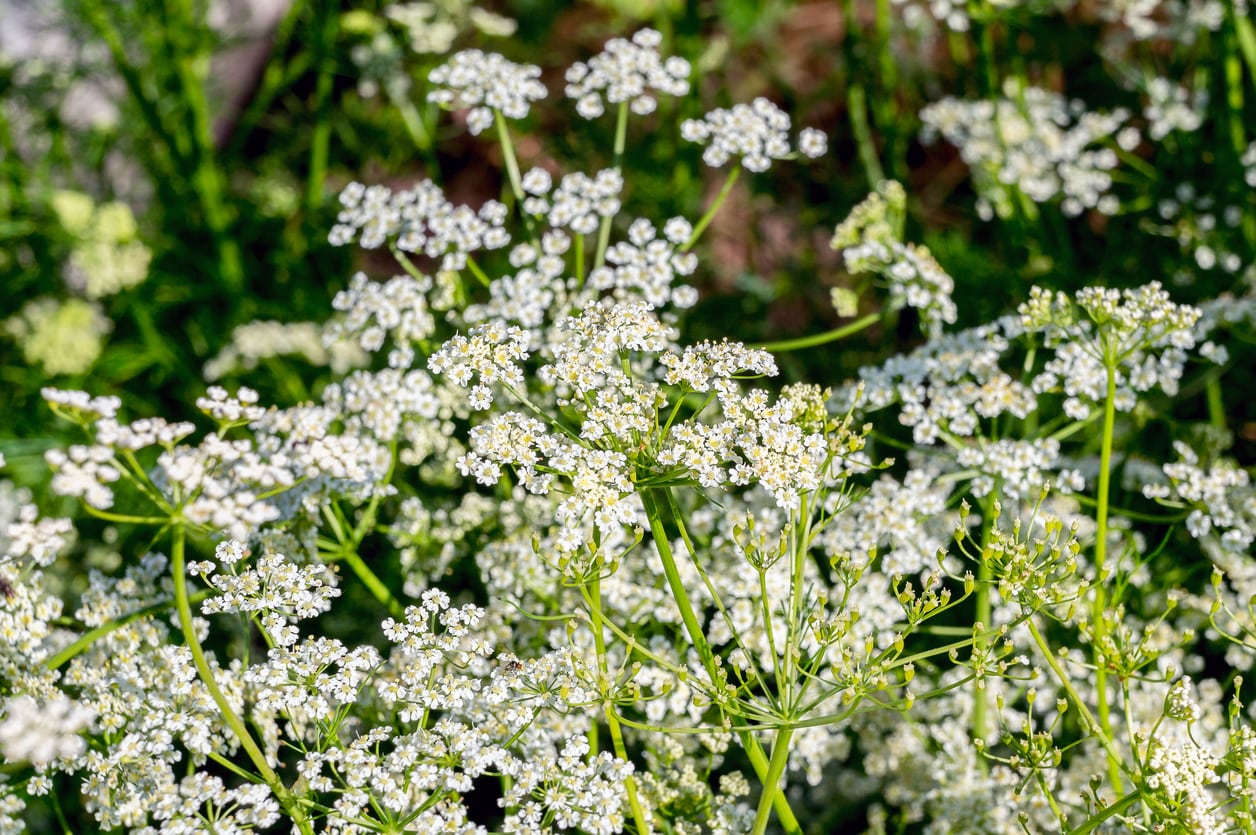Potted Caraway Plants – How To Care For Container Grown Caraway


Growing an herb garden gives you ready access to the most flavorful spices and seasonings right outside your kitchen door. Caraway is one such herb that has edible leaves, roots, and seeds. Potted caraway plants also offer mobility and versatility. When you plant caraway in containers you can locate them on small patios and lanais, making them perfect small space herbs. Some tips on growing caraway in a pot will get you on your way to enjoying caraway cookies, caraway laced cabbage, and other classic dishes.
Why Grow Caraway in Containers?
Planting edible plants and herbs in containers is an ideal way to enjoy fresh seasonings and produce in areas without much, if any, room for gardening beds. Container grown caraway relies upon a large container to allow the deep taproot to develop. This taproot is delicious prepared as a root vegetable after the biennial plant has bloomed and seeds have been harvested. The plant will decline after bloom and the roots are sweet and tasty. Keeping your herbs and spices close to the kitchen ensures you have the freshest seasonings for culinary and medicinal use. It is also a great way for apartment and condo dwellers to harvest and use this sweet spice. Caraway needs full sun but will tolerate partial shade. Potted caraway containers may be shifted around a small space to take advantage of the high points of light during the seasons, ensuring a better flower and seed harvest. Areas where sustained snow and frost are common should see containers moved to a sheltered location in winter. Outside of convenience and better cultural care, container grown caraway is a very pretty plant with rosettes of deeply cut leaves and airy umbels of tiny blooms.
How to Start Caraway in a Pot
Caraway thrives in well drained, moderately fertile soil. Seeds should be started indoors in flats ½ inch (1.5 cm.) deep. Once plants have germinated, thin seedlings to at least 8 inches (20.5 cm.) apart. Allow plants to grow two sets of true leaves and then move the flat outdoors to harden off the little caraway babies. Prepare a container that is at least 8 inches (20.5 cm.) deep. If you wish to grow other herbs or vegetables with the caraway, the diameter of the container should be up to a foot (30.5 cm.) wide. Use well-draining soil with a bit of compost worked into it. After seedlings have hardened off, plant in container at the level at which they were previously growing.
Caraway Container Plant Care
This is a pretty unfussy herb. Water young seedlings frequently as they establish. By the time they are forming proper rosettes, they should be well established and need infrequent irrigation. Use a good organic liquid fertilizer every few weeks during the growing months in the first year. Container plants will dry out more quickly than those in ground and need to be watered when an index finger inserted in soil indicates the soil is dry. In the second year, once flowers begin to form, the plant needs half the irrigation provided in the first year. There are no serious diseases associated with caraway but parsley caterpillars may invade. Hand pick and destroy these pests. Harvest leaves in either year one or two and use fresh. Seeds are collected when petals drop and capsules are tan colored.
Sign up for the Gardening Know How newsletter today and receive a free copy of our e-book "How to Grow Delicious Tomatoes".

Bonnie Grant is a professional landscaper with a Certification in Urban Gardening. She has been gardening and writing for 15 years. A former professional chef, she has a passion for edible landscaping.